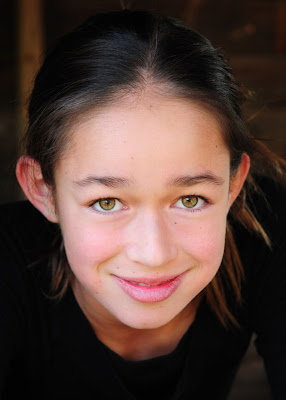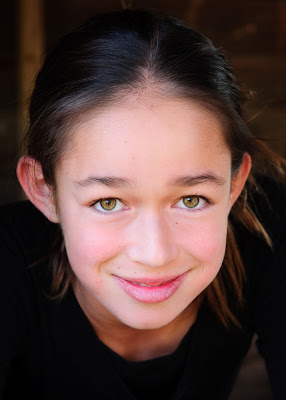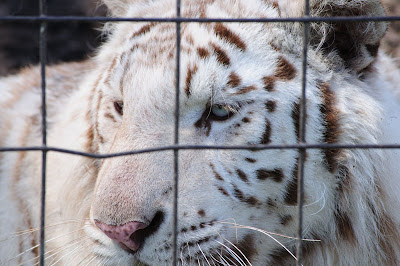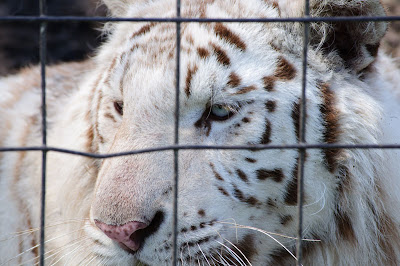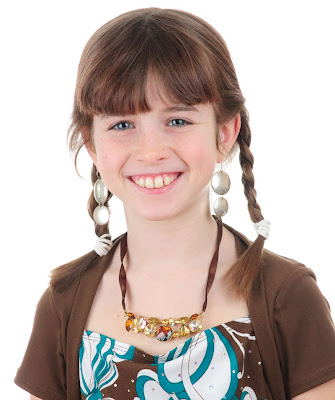
Let me start off by saying, I love
Adobe Photoshop Lightroom 2
. Over the years, I've tried pretty much every RAW processor out there, but Lightroom takes the cake. Lightroom makes a RAW workflow easier and more efficient than jpg. There is simply no faster way to get the most from your image files, and since Lightroom added camera profiles, I find I can match out of camera color pretty much exactly.

I say pretty much because occasionally I like the color of an out-of-camera (OOC) jpg better than the Lightroom version of the same image from RAW. This doesn't occur very often, so it's not a big deal. I just mentioned it because if I'm having a hard time with the RAW file, sometimes a quick conversion using Nikon ViewNX is the easiest solution.
Of course, if you are able to shoot perfectly so that you never need to touch an image in post-editing, then a jpg workflow is obviously the best for you. I say this tongue in cheek, because while I enjoy shooting RAW+jpg so that I have the jpg ready to use right way, there isn't very often that I don't want to work on an image in post, especially if I'm shooting for work (i.e. a wedding, a portrait shoot, commercial work, etc.).
I still see it said fairly frequently that the easiest solution to a fast efficient workflow is to shoot it right in camera and not have to work on it in post. While this is great in theory, it doesn't hold up in reality. Most of the time when I see someone espousing this type of thinking, I look at the images they're using as examples, and I immediately see how I would've worked on them in post. Maybe I'm just picky, but I want my work to look the best it can, and that usually means I want to work on it in post. It's not that an image doesn't look good straight out of camera, it's that it can look better.
Think of it in film terms from the "old" days. You'd have a negative or slide of a great shot, which, in the hands of a GREAT printer, makes a beautiful print (when I say printer, I'm talking about a artisan who has mastered the art of making a print... not a piece of hardware). The negative or slide was great, and the finished print is a masterpiece.
Same thing with jpg versus RAW. The jpg is like a print, where the RAW file is like the negative or slide. The jpg can be great, but what you see is pretty much what you get. There isn't a lot of latitude to work on it. A RAW file has MUCH more latitude for working it, and the therefore the print has more potential.
And that's where Lightroom shines. The power of RAW developing that Lightroom offers is hard to beat. You can even work on jpgs in Lightroom, although I've found that when I compare them head to head, the RAW file looks better about 99% of the time after editing in Lightroom. Jpg files just don't stand up as well when it comes to editing as RAW files dodoes.
But the title of this post is "Lightroom versus Nikon Capture or Nikon View", isn't it. :)

Well, periodically I open up Nikon CaptureNX or Nikon ViewNX and run a few conversions just to compare the results against Lightroom. Most of the time, it's a draw. Lightroom color is now pretty much the same as CaptureNX or ViewNX now that Lightroom has camera profiles. Once in a while though, I find an image that I just like better OOC or processed through Nikon software. Usually the color just looks a bit better, or the contrast or saturation just looks better.
What is interesting though, is that more often than not, the thing I do notice is the images out of Nikon ViewNX (I usually use ViewNX as it's faster and easier to do a quick RAW develop in ViewNX than it is in CaptureNX), have better fine detail. The Nikon software (whether in camera, or using Capture or View) just seems to have a slight edge in how it renders an image. This isn't surprising really when you think that Nikon should be able to get the most out of their image files... after all, they wrote the coding for them.
I'm not talking earth-shattering differences here. Most of the time it's subtle. Sometimes, it's more noticeable, but it's still not a drastic difference. Most of all, it's never enough of a difference that I would suffer the Nikon software workflow instead of using Lightroom.
That is the biggest difference between Lightroom and Nikon CaptureNX or Nikon ViewNX. The Nikon software is absolutely intolerable from a workflow standpoint. It's slow and sluggish, and whoever designed it obviously has never had to sit down and edit a thousand or more images from a wedding. Even working on a smaller shoot of a hundred or two images is painful with the Nikon software. Lightroom just blows it out of the water.
I honestly hope that Nikon eventually releases some imaging software that's capable of a decent workflow, but at the moment, that isn't the case. Add to that the fact that Lightroom just does so much more, and there is no question about the victor here.
Lightroom can catalogue, and since version 2, Lightroom does it VERY well. You need to let it ingest and build previews for new images (which is best done with you going to get a cup of coffee while LR does its thing), but once that stage is finished, Lightroom is FAST. I used to use PhotoMechanic for its speed in sorting and browsing RAW files, but not any more. Lightroom is just as fast, so there's no need.
The tweaks and edits you can perform to an image in Lightroom are almost unending. In fact, I rarely need to take an image into Photoshop now. Lightroom can do everything I need done, from vignettes to cloning out spots, from highlight recovery to curve adjustments.
Lightroom can also build very decent web galleries. It includes the popular Airtight Simpleviewer, Autoviewer, and Postcardviewer web gallery plug-ins. You can also find numerous other plug-ins on the web. My favourite is SlideShowPro.
The tweaks and customizing you can do to the look of Lightroom itself is cool too. You can edit the Lightroom Identity plate to show your studio logo instead of the Lightroom logo. This is fantastic for when you want to show a client some images. It just looks that much more professional.
Lightroom, like Photoshop, is incredibly powerful, and as such, requires some learning. Don't expect to just install it and know everything there is to know in ten minutes time. With great power, comes great responsibility... your responsibility to take some time to learn how to harness that power. I have to laugh when I hear people complain that Lightroom is too complicated, only to find out they've never given it more than a couple of minutes to learn it. Yes, it takes some time to get the full benefit from Lightroom, but trust me... its worth it!
As you can tell, I'm a big fan of Lightroom. Version 2 has brought HUGE improvements in almost every aspect, especially speed. One caveat I will note is that Lightroom is really designed to run on a more powerful computer. My dual core laptop with 4GB of RAM runs it OK, but not anywhere near as well as my Quad Core desktop with 6GB of RAM. I have friends with even faster systems that say they don't even see LR working, it's just that fast. So, you probably don't want to be running Lightroom on an older computer, especially if you're working on a lot of images on a regular basis.
If you have an image where you just can't seem to quite get the color or "look" that you want, try running it through Nikon ViewNX or CaptureNX. You may find that'll give you your fix. For the other 99.9% of the time though, Lightroom is the software to go to. It's fast, powerful, and intuitive. Best of all, if you take the time to learn it, you can refine your workflow to a level you didn't think possible.
Check out my other
Lightroom Tutorials.
If you don't have
Adobe Photoshop Lightroom 2
, Amazon usually has the best price.






